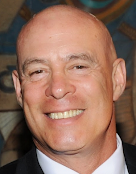Psychologist Jeffrey Mishlove in “Beyond the Brain:
The Survival of Human Consciousness After Permanent Bodily Death,” provides evidence of medium communication after death.Leonora Piper. William
James brought the Boston medium Leonora Piper to the psychical research
community’s attention. She became one of the most researched mental mediums in
history.
James’
colleague Richard Hodgson had established his skeptical credentials earlier by
debunking Madame Blavatsky, a Theosophical Society founder. Hodgson studied
over 500 sittings with Piper. He concluded that a man named George Pellew
(1859-1892), who produced automatic writing through Piper as her control
spirit, was an authentic, discarnate individual.
Hodgson wrote a report detailing the
correct and intimate details the deceased George Pellew communicated through
Leonora Piper. Of 150 sitters who came to see Piper in sessions where the
discarnate George Pellew manifested, thirty were individuals who had known
Pellew in life. In 29 of these sessions, the deceased Pellew recognized them
and addressed them by name. The only sitter the discarnate Pellew didn’t
identify was a woman whom he hadn’t seen in life since she was a little girl.
These
detailed and intimate communications convinced Hodgson – who had been skeptical
until then – that he was dealing with a formerly incarnate human being.
Hodgson
also noted the discarnate Pellew didn’t recognize the other 120 sitters, people
attending Piper’s séances, whom he had never known in life. He saw this as
evidence counting against the hypothesis the medium Leonora Piper or her
communicator George Pellew were getting information by telepathically reading
the individual sitters’ minds.
After
working with Piper for years, Hodgson himself died unexpectedly in 1905.
Subsequently, he appeared as a communicator in sittings with Piper. The
prominent psychologist William James analyzed these sessions. He remarked that,
because Hodgson had worked for so long with
Piper, the conditions were far from ideal. Still, Richard Hodgson’s spirit
communicating through Piper provided many intimate and accurate details concerning
Hodgson’s life that Piper did not know.
When
viewed in the light of his wider knowledge of mental mediums (and Piper in
particular), James acknowledged he believed Hodgson’s ostensible spirit
provided information that was paranormal. It wasn’t likely to be attributed to
Piper’s telepathic abilities:
...
the total effect in the way of dramatic probability of the whole mass of
similar phenomena on my mind, is to make me believe that a “will to
communicate” [meaning via a spirit entity] is in some shape there.
Therefore,
he speculated that if the discarnate Hodgson wasn’t communicating through Piper
– perhaps it was a spirit entity, with access to a cosmic reservoir of all
knowledge, masquerading as Hodgson. James hoped, within the next hundred years,
psychical research would resolve this potential confusion.
Frederic Myers’ return. The major case of a deceased entity starting and taking
part in psychical research is that of Frederic Myers. In 1902, the discarnate
Myers started an experiment lasting for over three decades. It resulted in over
3,600 documents, referred to as the cross-correspondences. Near the end
of this series, Myers dictated two books about the afterlife through Geraldine
Cummins’ automatic writing mediumship.
Frederic
Myers was, without question, a stellar figure in the founding and early
investigations of the Society for Psychical Research. He was coauthor, with
Edmund Gurney and Frank Podmore, of Phantasms of the Living. Over a
century after its posthumous publication in 1903, Myers’ book, Human
Personality and Its Survival of Bodily Death, remains a classic.
Myers
introduced the term telepathy and preceded Freud in discussing the
subconscious mind, which he called the subliminal mind. Myers expected
that communicators from the other side were planning experiments:
...
there are probably experiments of a complexity and difficulty which surpass our
imagination; but they are made from the other side of the gulf by the efforts
of spirits who discern pathways and personalities which for us are impenetrably
dark.
The
discarnate Myers laid out a plan for the cross-correspondences in
messages transmitted via automatic writing through Margaret Verrall in
Cambridge, a classical scholar, and Myers’ friend:
Record
the bits and when fitted they will make the whole.... I will give the words
between you neither alone can read but together they will give the clue he
wants.
Thus
began a project that ran, at least, until 1936 and included scripts from nine
different automatic writers receiving messages from Myers and other deceased
researchers from the Society. The overall project is too complex to be
summarized adequately here. This complexity has led some critics to dismiss the
entire matter as hopelessly obscure – requiring Greek and Latin knowledge,
and an understanding of poetic allusions from Wordsworth and others.
It
took several years before Society for Psychical Research investigators detected
Myers’ project and wrote about it. This first occurred when Alice Johnson, the
Society’s secretary, published a lengthy article concerning the automatic
writing of Mrs. Holland in India – a pseudonym for Alice Fleming, the
famous poet Rudyard Kipling’s married sister. Fleming’s family disapproved of
her remarkable “uncanniness.”
Nevertheless,
Alice Fleming persisted in her experiments with automatic writing. Transcripts
show discarnates Myers and Edmund Gurney (another of the Society’s deceased
founders) both coached her in this discipline. However, as she had been reading
Myers’ classic book, it is reasonable to assume her subconscious mind was, at
least, helping them along.
At
one point, she wrote the address, 5 Selwyn Gardens, Cambridge, along with a
message that Fleming should contact Margaret Verrall, the first automatic
writer to receive messages dictated by Myers. Fleming had never been to
Cambridge and had never met Verrall – although she knew of her from Myers’
book. She had no way of knowing Verrall’s address (which it was). Fleming,
however, didn’t contact Verrall directly. Instead, she reached out to Alice
Johnson.
Johnson,
in that lengthy article, describes the cross-correspondence process:
What
we get is a fragmentary utterance in one script, which seems to have no
particular point or meaning, and another fragmentary utterance in the other, of
an equally pointless character; but when we put the two together, we see that
they supplement one another and that there is apparently one coherent idea
underlying both, but only partially expressed in each.
These
cross-correspondences are complicated, with many overlapping meanings. It took
Johnson 226 pages to describe the early instances. Despite its obscurity,
the cross-correspondences present substantial evidence for survival.
Jeffrey Mishlove’s essay, “Beyond the Brain:
The Survival of Human Consciousness After Permanent Bodily Death,” received
first prize in the 2021 Bigelow Institute’s challenge to provide proof for the
survival of human consciousness after death. Footnotes in Mishlove’s essay and
videos he refers have been removed in this presentation but are available in
his essay, which may be downloaded at https://bigelowinstitute.org/contest_winners3.php. Mishlove is a
licensed clinical psychologist, author, and host on YouTube of “New Thinking
Allowed.”












